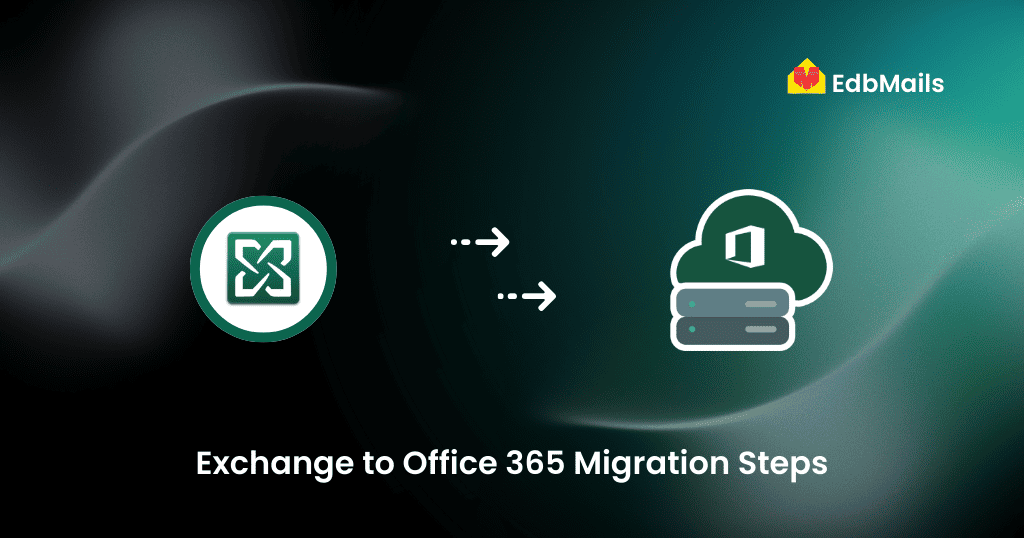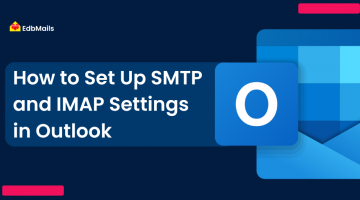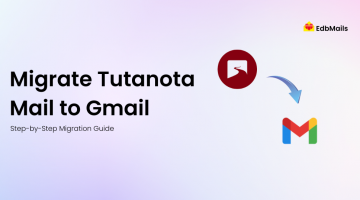Migrating from an on-premises Exchange Server to Office 365 (Microsoft 365) has become one of the most strategic IT decisions for modern organizations. Businesses today require scalable, secure, and collaborative environments, and Microsoft’s cloud ecosystem provides exactly that.
However, migration is often viewed as complex—IT teams worry about downtime, compatibility issues, data loss, and disruption of daily operations. That’s where automation tools like EdbMails Exchange Migration Tool come in, helping organizations transition smoothly without the technical headaches.

This detailed guide explores why migration is important, the available methods, preparation steps, and how EdbMails simplifies the process for businesses of all sizes.
Why Migrate from Exchange to Office 365 Now?
The business landscape has shifted dramatically:
- Remote and Hybrid Work – Teams need reliable access from anywhere, on any device.
- Cost Optimization – Maintaining on-premises servers is expensive. Office 365 eliminates infrastructure overhead.
- Security & Compliance – With growing cyber threats, Office 365 offers advanced threat protection, data loss prevention, and compliance frameworks (GDPR, HIPAA, ISO, etc.).
- Automatic Updates – No more manual patching or server maintenance—Microsoft handles it all.
- Scalability – Easily add or remove licenses as your business grows.
Migrating is not just a technical move—it’s a business transformation that ensures agility, security, and competitiveness.
Preparing for Exchange to Office 365 Migration
Before jumping into migration, careful planning and assessment are crucial. Here’s a checklist:
1. Assess Your Current Exchange Environment
- Identify Exchange version (2003, 2007, 2010, 2013, 2016, 2019).
- Review mailbox sizes, distribution groups, public folders.
- Check custom configurations and third-party integrations.
2. Choose the Right Office 365 Plan
- Small teams may prefer Business Basic or Business Standard.
- Large enterprises may need E3 or E5 for compliance and advanced security.
👉 Microsoft 365 plans comparison.
3. Prepare Users and Infrastructure
- Communicate timelines to employees.
- Upgrade Outlook clients (2007 or earlier are incompatible).
- Verify domain ownership (DNS setup required for Office 365).
4. Run Pilot Migrations
Use EdbMails Free Demo to migrate a few mailboxes (30 items per folder). This validates compatibility before the full rollout.
Exchange to Office 365 Migration Methods
Microsoft offers multiple native migration methods—but they often require PowerShell scripts, manual configuration, and IT expertise. EdbMails automates these processes, offering a simpler, faster, and error-free approach.
1. Cutover Migration (For Small Businesses)
- Moves all mailboxes at once.
- Recommended for <200 mailboxes.
- Challenges with Native Method: Time-consuming, causes downtime.
- With EdbMails: Direct, automated, zero-downtime migration.
👉 EdbMails Cutover Exchange Migration Guide.
2. Staged Migration (For Large Organizations)
- Migrates mailboxes in batches.
- With EdbMails: Easily divide mailboxes into batches, monitor progress in real time, and rerun failed items without duplication.
👉 EdbMails Staged Exchange Migration Guide.
3. Hybrid Migration (For Enterprises)
- Maintains coexistence between on-premises Exchange and Office 365.
- Best for enterprises that want a phased approach.
👉 EdbMails Hybrid Exchange Migration Guide.
4. Batch Migration (Flexible Option)
- Useful when mailboxes are large or time is unpredictable.
- With EdbMails: Create flexible migration waves, reduce risks, and maintain business continuity.
EdbMails Exchange Migration Tool – Why Businesses Choose It
Migrating with Microsoft’s native tools means dealing with:
- PowerShell scripts
- Downtime risks
- Manual error handling
- Limited reporting
EdbMails solves all of this with automation and enterprise-ready features:
- Supports all Exchange versions (2003–2019) and Office 365
- Granular migration – Select mailboxes, folders, or items
- Incremental sync – Migrates only new items in subsequent runs
- No duplication of data
- Secure migration
- Free 24/7 technical support
👉 Explore full EdbMails Exchange Migration features
Step-by-Step Migration Workflow with EdbMails
- Download & Install EdbMails on your Computer.
- Connect to Source Exchange Server.
- Connect to Target Office 365 Tenant.
- Select Mailboxes/Folders to migrate.
- Start Migration – Monitor real-time progress.
- Run Incremental Sync (if required) to migrate only new/changed data.
👉 Detailed Exchange to Office 365 Migration Steps
EdbMails Support & Resources
- 24/7 Support – Chat, Email & Remote Assistance
- Knowledge Base – Step-by-step tutorials
- Exchange to Office 365 Migration Video Tutorials – Learn visually
- Free Trial – Test before buying (30 items per folder)
Conclusion
Migrating from Exchange Server to Office 365 is a strategic business upgrade—enhancing security, collaboration, and cost-efficiency. But the migration process doesn’t have to be overwhelming.
With EdbMails Exchange Migration Tool, businesses achieve:
- Zero downtime migration
- Automated, user-friendly process
- Flexible options (Cutover, Staged, Hybrid, Batch)
- 24/7 expert support
👉 Get started today: Download Free Trial of EdbMails



